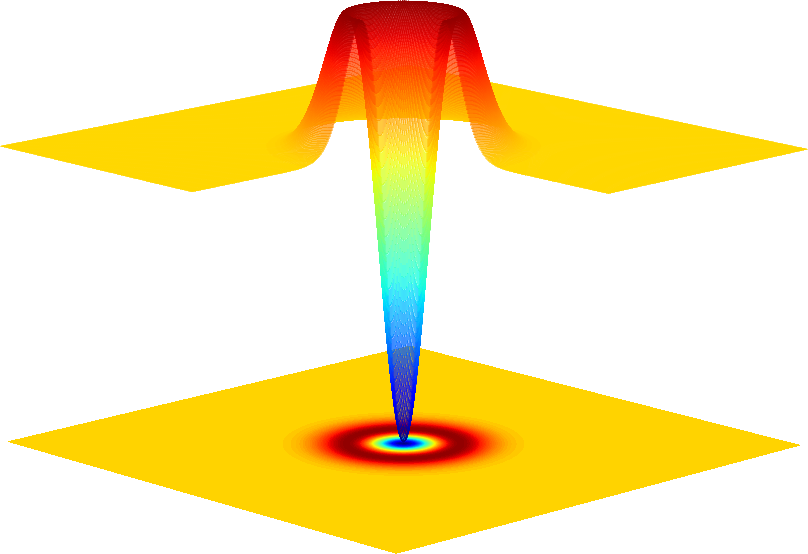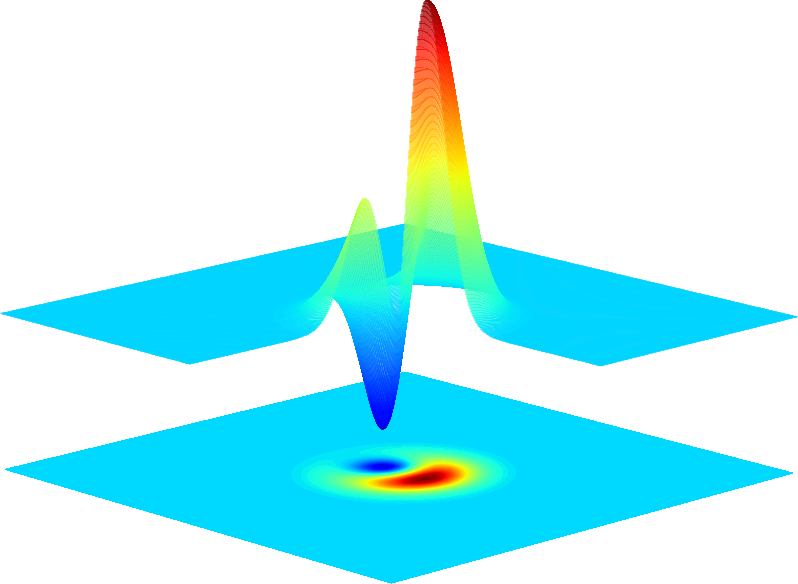Programme
June 16
| 9h00 | Welcome / presentation IF QuantAzur |
| 9h30-10h |
Pierre Azam,
INPHYNI,
Quantum simulator with hot atomic vapor Numerical resolution of complex problems remains a challenge for various applications, high performance computation centers reaching their limits in terms of speed in addition to being huge energy consumers. In recent years, important efforts are conducted to realize quantum computers and quantum simulators in order to address these limitations. Many devices presently under construction, exploit many entangled qubits, and are often based on cryogenic or ultra-cold atom techniques, in order to avoid thermal decoherence. A alternative, though less universal development has thus emerged with the goal of realizing more specialized quantum simulators, able to solve specific problems. In this project we propose to develop a remote-controlled stand-alone device to operate as a wave simulator based on the non-linear interaction of a laser beam with a hot atomic vapor. Initial problems to be addressed include hydrodynamic equations. |
| 10h-10h30 |
David Wilkowski,
MAJULAB,
Atom Trapping in Subwavelength Superoscillatory Optical Tweezers We used superoscillatory fields to trap a single cold atom in subwavelength trap beyond the Abbe’s limit. We characterize the system measuring the effective temperature and the lifetime of the atom as well as the trap frequency. Extreme control of the atom position and compact network of optical trap are useful for future quantum computing with neutral atoms. |
| 10h30-10h50 | Coffee break |
| 10h50-11h20 |
François Dubin,
CRHEA,
A Semiconductor Platform for Quantum Simulations of Hubbard Hamiltonians The Hubbard Hamiltonian constitutes one of the most celebrated models of condensed matter physics. It describes strongly interacting quantum particles confined in lattice potentials. Here we report a semiconductor technology to emulate Hubbard hamiltonians. We first emphasise the bosonic regime. For that we optically inject excitons, i.e. electron-hole pairs, which are confined in artificial two-dimensional lattices. By programming suitable lattice geometries, and by relying on quasi-long-range dipolar interactions between excitons, we show that Mott insulators and checkerboard solids realise the many-body ground-state at unity and half fillings respectively. In the latter regime we thus confirm that anti-ferromagnetic ordering is energetically preferred for the Ising Hamiltonian in a square lattice. If time permits, we finally show that our technology also allows us to emulate Fermi-Hubbard Hamiltonians, and Bose-Fermi mixtures, by further controlling the density of excess holes interacting with excitons. |
| 11h20-11h50 |
Patrizia Vignolo,
INPHYNI,
Ultracold linelands The last few decades progress on cooling and manipulation of atomic gases has allowed to have full access to the quantum world. Quantum degeneracy has been reached both for fermions and bosons and Bose-Einstein condensation has been experimentally observed, cooling down atomic gases to few tens of nK. These ultracold gases can be confined not only in three-dimensions but also in two and one dimension. The effect of lowering the dimensionality is to increase correlations between the atoms. For quantum particles living in a lineland, amazing things can happen: the effect of interactions increase by lowering the number of atoms, and strongly interacting bosons behave as free fermions. One-dimensional quantum mixtures offer the privilege to access, in some cases, the exact many-body wavefunction. One special case that allows to go further in the calculations, capturing correlation functions and dynamics, even in the presence of external confinements, is the Tonks-Girardeau limit, where the contact interaction between particles is repulsive and tends to infinity. The study of this limiting case allows a deep understanding of quantum correlations in many-body systems, in and out-of equilibrium, and to have a benchmark for classical and quantum simulators of such systems. |
| 11h50-13h40 | Lunch |
| 13h40-14-10 |
Raphaël Chétrite,
LJAD,
Slow-Fast competition in quantum continuous measurement In many physical systems, we are faced with an interaction between mechanisms that evolve at very different time scales. In this seminar, we will consider Markovian processes with such characteristics, and we will exploit the time scale separation to obtain an effective Markovian dynamics on a reduced state space. In particular, compared to existing studies, we will introduce a more general formalism. Finally, as a privileged example, we consider the limit of the strong continuous measure of quantum systems described by a Belavkin diffusive equation. |
| 14h10-14h40 |
Konstantin Avrachenkov,
Inria – NEO,
Quantum (random) walks I shall survey several continuous-time and discrete-time quantum walks, compare them with the classical random walks and point to applications in search and distributed algorithms. |
| 14h40-15h00 | Coffee break |
| 15h00-16h30 | Round table on quantum computing and simulation |
June 17
| 9h30-10h00 |
Hui Khoon Ng,
MAJULAB,
Quantum computing in the presence of resource constraints Fault-tolerant quantum computing is the only-known route to bring our present-day small and noisy quantum computing devices to large-scale ones capable of accurate computation in useful problems. In current experiments, however, constraints in physical resources (e.g., energy, space, bandwidth, etc.) place significant limitations in the attainable accuracy of a quantum computer even with fault-tolerant schemes. I will discuss the performance of fault-tolerant quantum computing in the presence of resource constraints, and emphasize the need to optimise the fault-tolerance design alongside the hardware implementation to maximise computational accuracy. The same logic provides experimenters with a tool for finding the minimum resources required to run an algorithm with a prescribed computational accuracy. When combined with a full-stack quantum computing model, this provides the basis for resource estimates of future large-scale quantum computers. |
| 10h-10h30 |
Ezio Malis,
Inria – ACENTAURI,
Quantum Algorithms for Robotics Quantum computing is revolutionizing several scientific disciplines and their applications, such as cryptography or scientific computing. Even if research efforts are currently more focused on the physical realization of quantum computers, research on programming languages and algorithms is already underway because a quantum computer would make it possible to carry out certain calculations inaccessible to current supercomputers in humanly reasonable time (quantum supremacy). Without waiting for the emergence of universal quantum computers there is a definite interest in identifying which perception, decision and control problems in robotics could be solved by quantum machines available nowadays or in the near future and to propose new quantum algorithms. In this talk, I will present some problems in robotics that could benefit from the speedup provided by quantum algorithms like vision-based localization and path planning. Moreover, I will discuss problems related to the integration of quantum computers in robotic systems. |
| 10h30-10h50 | Coffee break |
| 10h50-11h20 |
Olivier Alibart,
INPHYNI,
Operational entanglement-based real-field quantum key distribution Quantum key distribution is arguably the fastest growing area in quantum information science. Since its creation in 1984 QKD protocols have diversified and in 2022, QKD has been demonstrated on real field implementation, exploiting free-space links toward satellites, terrestrial and underwater fiber links combined with optimized experimental protocols. In Nice, we demonstrated an entanglement based quantum link on a metropolitan scale over 50km of fibers. It is the first practical link based on entanglement providing useable secret key. We will propose an overview of the state of the art and show in details the performance of our QKD link. |
| 11h20-11h50 |
Clément Maria,
Inria – DATASHAPE,
Quantum complexity theory In this talk, we will introduce standard notions of classical and quantum complexity theory, notably the complexity classes P, NP, #P (classic) and BQP (quantum), as well as standards theorems such as the Solovay-Kitaev theorem. Along the way, we will introduce the notion of quantum circuit as model of quantum computation, and highlight similarities and connections between the classical and quantum complexity classes. If time permits, we will illustrate these notions with natural computational problems from knot theory. |
| 11h50-13h40 | Lunch |
| 13h40-14h10 |
Abdelrahman Ijjeh,
LEAT,
High Performance Computing (HPC) in computational physics Abstract to come |
| 14h10-14h40 |
Philippe Nain,
Inria – NEO,
Quantum switch In this talk we address the performance evaluation of a quantum entanglement distribution switch that serves users in a star topology. We model variants of the system as continuous-time Markov chains and derive expressions for several metrics of interest (switch capacity, number of qubits stored in memory at the switch, etc.). Results obtained in this work can serve as a useful guide toward the future design of quantum switches—e.g., by allowing the designer to determine how many quantum memories suffice for a given number of users—as well as provide valuable insight on the performance of these and similar devices. |
| 14h40-15h00 | Coffee break |
| 15h00-16h30 | Sébastien Tanzilli, INPHYNI, Presentation of PEPR-Q followed by a round table on quantum communication and metrology |


![[UCA]](http://www-sop.inria.fr/coati/events/quantazur2022/img/UCA2.png)
![[EUR SPECTRUM]](http://www-sop.inria.fr/coati/events/quantazur2022/img/spectrum.png)
![[EUR DS4H]](http://www-sop.inria.fr/coati/events/quantazur2022/img/ds4h.png)
![[UCA]](http://www-sop.inria.fr/coati/events/quantazur2022/img/UCA.png)